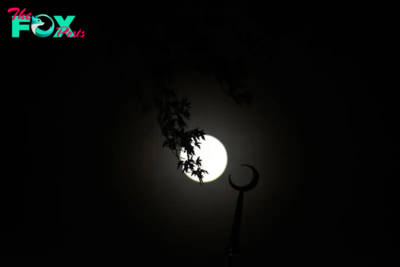Science
Gravitational waves reveal 1st-of-its-kind merger between neutron star and mystery object
Astronomers announced on April 5 that they may have detected a collision between a neutron star and a lightweight mystery object — an object larger than the largest known neutron star, but smaller than the smallest known black hole. The finding sheds light on objects that exist in this murky realm, which was long thought to be empty but, in recent times, has revealed otherwise.
More specifically, a signal detected in a pocket of the universe roughly 650 million light-years from Earth indicates a rare merger between a neutron star and what astronomers suspect is a surprisingly lightweight black hole. The pair would have danced around one another and merged about 650 million years ago, generating ripples in the fabric of space and time known as gravitational waves. These waves were sensed and flagged on May 29, 2023 by a network of antennas in Japan, Italy and the U.S. associated with the LIGO-Virgo-KAGRA (LVK) collaboration.
"These are rare events," Evan Goetz, a LIGO researcher at the University of British Columbia (UBC) in Canada, told Space.com. "It's very exciting for the community to study as the first one of its type."
The black hole candidate, which is about 2.5 to 4.5 times heavier than our sun, is heavier than the established limit of 2.5 suns for a neutron star — but lighter than the lightest known black hole, which weighs about five solar masses. This places the newfound object within the "mass gap," a Mysterious region that separates the heaviest neutron stars from the lightest black holes.
This discovery "hints at this 'mass gap' being less empty than astronomers previously thought," Michael Zevin, an astrophysicist at the Adler Planetarium, said in a statement.
Related: Uranus and Neptune aren't made of what we thought, new study hints
Black holes, small and big, are born from the violent deaths of immensely massive stars. A few models of how stars evolve, however, predict black holes with masses within the "mass gap" range cannot directly form from such stellar deaths.
-

 Science10h ago
Science10h agoHow to See the ‘Beaver’ Supermoon—the last of 2024
-

 Science5d ago
Science5d agoInside Capitol Hill’s Latest UFO Hearings
-

 Science5d ago
Science5d agoYou Won’t Want to Miss the Leonid Meteor Shower. Here’s How and When You Can See It
-

 Science6d ago
Science6d agoHere’s What Trump’s Win Means for NASA
-

 Science1w ago
Science1w agoWhy Risky Wildfire Zones Have Been Increasing Around the World
-

 Science1w ago
Science1w agoIt’s Time to Redefine What a Megafire Is in the Climate Change Era
-

 Science1w ago
Science1w ago4 Astronauts Return to Earth After Being Delayed by Boeing’s Capsule Trouble and Hurricane Milton
-

 Science1w ago
Science1w agoThe Elegance and Awkwardness of NASA’s New Moon Suit, Designed by Axiom and Prada



























